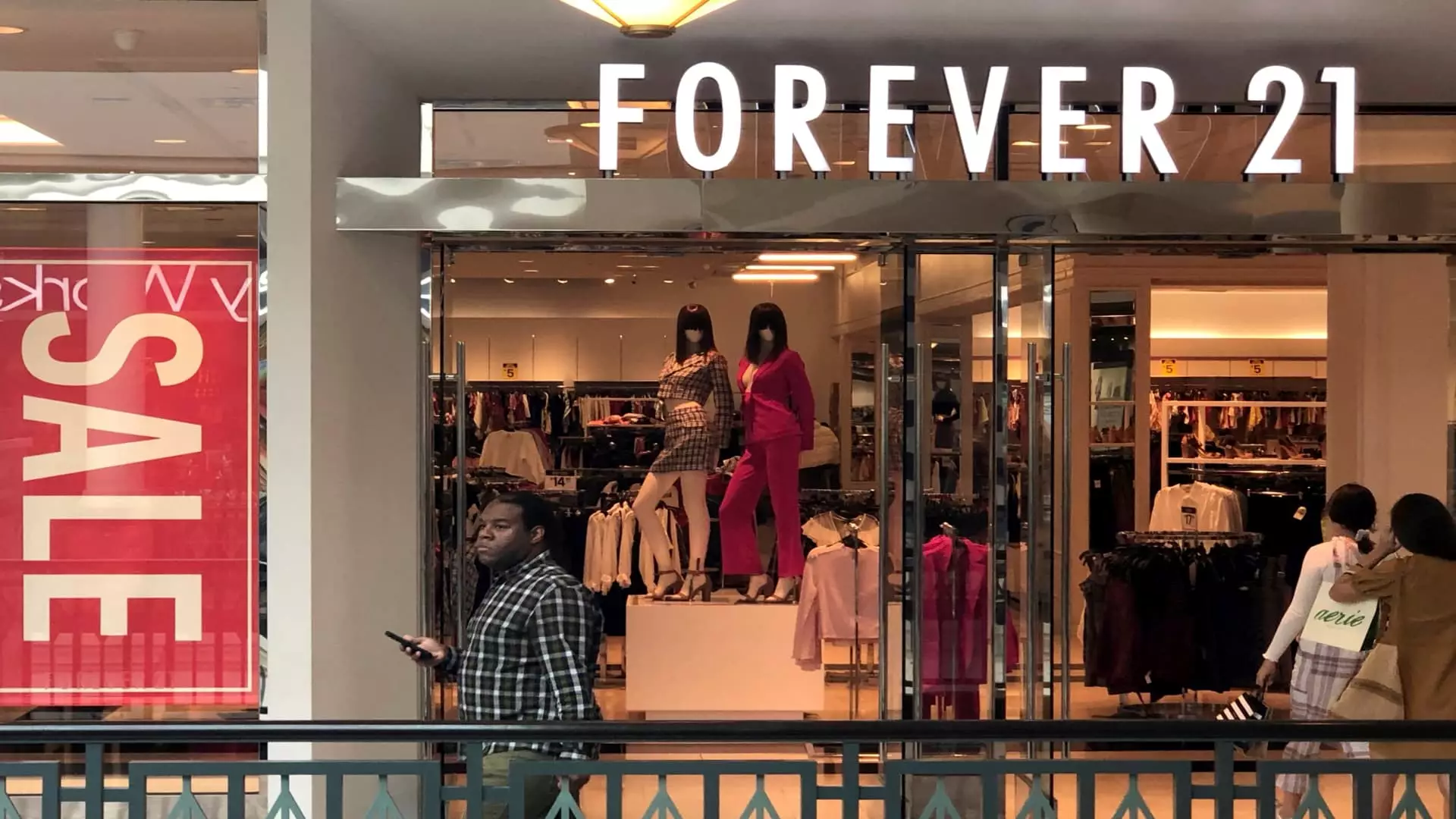Forever 21, a name synonymous with fast fashion for countless young shoppers, can be seen as a potent symbol of an industry in turmoil. Filing for bankruptcy for the second time in six years, the retailer’s decline raises critical questions not only about its management choices but also about broader market dynamics and governmental policy surrounding international commerce. The company’s inevitable slowdown illustrates the vulnerability of businesses tied to fickle consumer trends and underlines the fragility of American retail in the face of global competition, particularly from market disruptors like Shein and Temu.
This bankruptcy isn’t merely a sad bookmark in Forever 21’s history; it represents a disheartening shift within the fabric of American retail and signals the fallout of prioritizing rampant expansion over sustainable business practices. The prevalence of e-tailers offering deeply discounted apparel has caused a seismic shift in consumer expectations, where low prices triumph over brand loyalty—a shift that could devour even well-established entities like Forever 21.
Incompetence Meets Collision Course: The Economic Landscape
With over 350 brick-and-mortar locations now facing closures, Forever 21 bears the brunt of ever-soaring inflation rates and shifting consumer habits catalyzed by the COVID-19 pandemic. But the company’s struggles don’t solely lie within the realm of economic fluctuations; they critically hinge on its inability to pivot swiftly in a rapidly evolving landscape. As the co-chief restructuring officer Stephen Coulombe stated, the company was “materially and negatively impacted” by the loopholes in trade law that foreign competitors exploited, guiding customers toward cheaper alternatives.
The fact that the U.S. retains loopholes permitting imports valued under $800 to sidestep tariffs is emblematic of policy failure. Such frameworks disadvantage domestic retailers that dutifully shoulder the burdens of duties while facing unyielding competition from companies that benefit from these exemptions. It’s a classic case of policy undermining American enterprises—a failure to recognize that America’s economic foundation relies on supporting its own businesses rather than capitulating to global competitors.
Brand Identity Crisis: When Partnerships Don’t Work
In an attempt to reclaim its lost stature, Forever 21 enlisted a partnership with Shein—not an audacious comeback strategy, but a desperate attempt to stay relevant. This move reflects a sinking ship trying to find some semblance of solace in an alliance that is far from beneficial. It raises the question: can collaboration with a competitor truly revitalize a brand’s fortunes?
Regrettably, the partnership didn’t turn the tides, and instead merely highlighted the brand’s inability to innovate or differentiate itself in an outrageously competitive market. The failure to stem losses underscores the oft-cited axiom that, in business, desperation rarely leads to success. The lost revenue, expected to exceed $180 million in EBITDA through 2025, is tantamount to a clarion call urging retail executives to rethink strategies that yield mere palliatives rather than revolutionary change.
Failures in Leadership: A Cautionary Example
The telltale sign of poor leadership is echoed in the sentiments expressed by Authentic Brands Group CEO Jamie Salter, who candidly identified acquiring Forever 21 as “probably the biggest mistake” he’s made. This frank admission serves as a vital lesson for company heads everywhere: visionary leadership requires foresight, and you must anticipate market shifts instead of merely reacting to them.
It is alarming that a once-vibrant retailer like Forever 21 has been stripped down to over $1.58 billion in loans and substantial debts to international manufacturers. Actions taken too late to rectify mounting issues have signaled alarm bells across the industry—highlighting that the retail sector is unforgiving to mismanagement, especially in strategizing product offerings, financial stewardship, and understanding the evolving needs of the consumer.
A Ray of Hope? The Future of Forever 21
Despite the staggering losses and looming liquidation, Forever 21’s international operations and intellectual properties are not entirely beyond saving. The prospect of new partnerships with savvy operators focused on modernizing the brand offers a glimmer of hope. While it is critical to recognize that the brand must adapt to remain relevant, this forthcoming change may stimulate fresh life into a label struggling to keep pace with its competitors.
The core sentiment among proponents of traditional retail is that while Forever 21’s struggles reflect a larger crisis in American consumerism, they also provide an opportunity for innovation. The ongoing evolution of the brand must include redefining its relationship to fast fashion and embracing a more sustainable business model that is in tune with modern consumer ethics. Only time will tell whether this tumultuous journey can serve as a learning experience, but the reality is clear: in the world of retail, staying stagnant is akin to inviting extinction.

